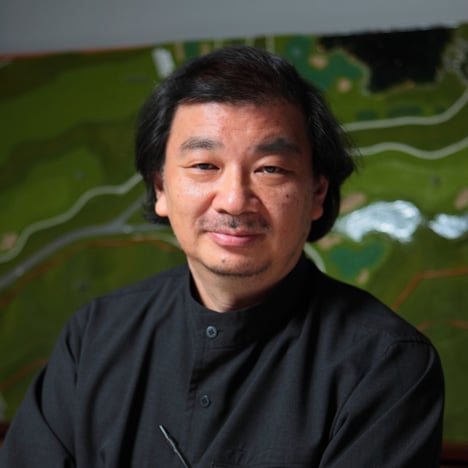
Shigeru Ban to do "smaller number of projects" following Pritzker Prize award
News: Japanese architect Shigeru Ban has said he intends to work on fewer projects and may reduce the size of his office following his acceptance of the Pritzker Prize, which he says he did not expect to win.
Speaking to journalists including Dezeen ahead of the prize-giving ceremony in Amsterdam yesterday night, Shigeru Ban said that he was receiving emails with new proposals but was going to be "very careful" not to extend his office.
"I like to make my office maybe smaller, because I like to keep doing the same thing, spending a lot of time for each project, designing myself and being on the site and listening to the people who are living there, and also spend enough time for the disaster area," said Ban.
"In order to do this, it is very important we make our number of projects smaller. Not quantity but quality."
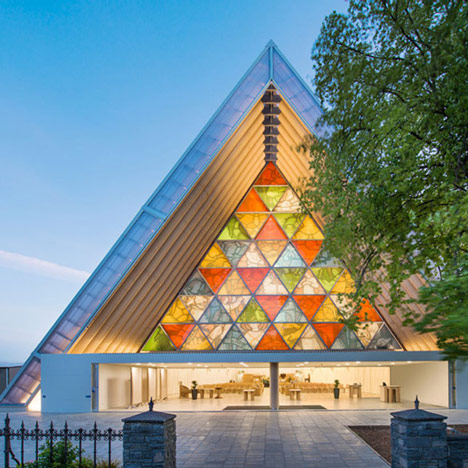
The Japan-born architect was awarded the Pritzker medal during a ceremony outside Amsterdam's Rijskmuseum last night, attended by guests including architects Rem Koolhaas and Alejandro Aravena as well as the Netherland's Princess Beatrix and members of the Pritzker family.
Ban, who previously served as a juror on the Pritzker panel from 2006 to 2009, said he did not expect to be awarded the prize, because "I am not that level yet".
He added that he saw the prize an an encouragement rather than the recognition of a lifetime's work that it usually celebrates.
"I want to make a balance of working for the priveleged people and working for the disaster. And it's becoming that there is no differences for me. Only difference is whether I am paid or not but otherwise there is no differences," he said.
"This [prize] is such a great encouragement for me to continue in that same direction, to be not only an architect but to make wonderful architecture to be loved by people."
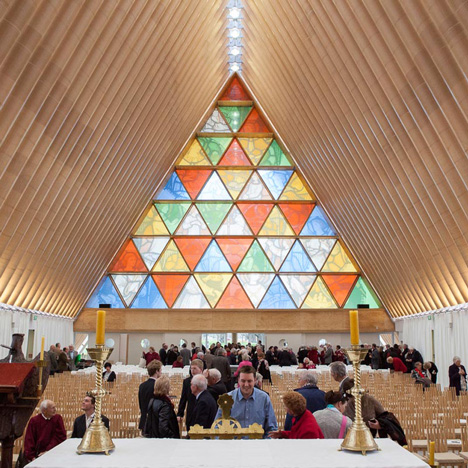
Ban was viewed by some as an unusual choice for the Pritzker Prize when he was announced as this year's laureate in March. The prize is often seen as an award for a lifetime of work including a portfolio of well-known permanent projects, past recipients have included star names such as Richard Rogers, Norman Foster, Frank Gehry, Herzog & de Meuron and Oscar Niemeyer.
At 56, Ban is a relatively young recipient, and is best known for his work in disaster areas, building temporary structures from recycled materials including cardboard tubes. His humanitarian projects have included temporary housing for refugees and community buildings.
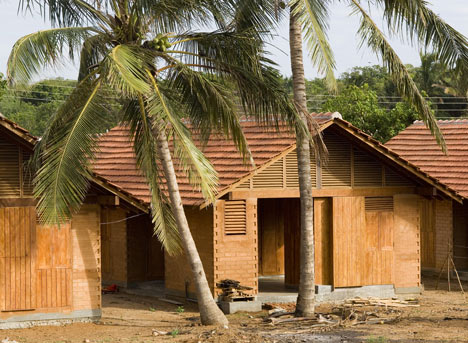
Jury chair and architectural patron Peter Palumbo said that this year's deliberations had been influenced by the growing world housing crisis.
"By the year 2020, which is after all only around the corner, there will be one billion people on this planet who have no roof over their heads," Palumbo told Dezeen.
"This is a very compelling and serious problem. I think that anything that the prize can do to raise the public awareness of this problem is worth doing. Because if we don't, who is going to."
"So much is happening in the world, the world is changing so quickly, that we need to reflect those changes in what we do as a jury."
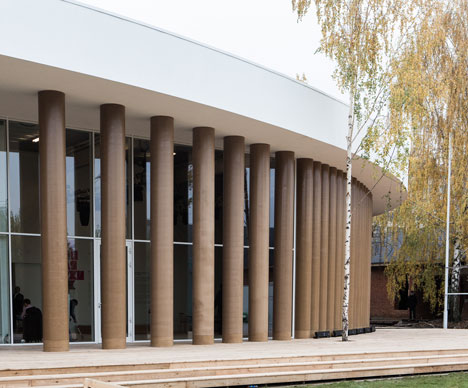
But Palumbo and fellow jurors and past Pritzker laureates Wang Shu and Glenn Murcutt were quick to defend the decision against suggestions that they had chosen Ban for his humanitarian work above the quality of his architecture.
"I think some people give narrow critique to Shigeru Ban's work, 'oh this guy he do something small building just for disaster', something like this," said Shu. "It is really hard to find an architecture in difficult situations that can really keep so high serious standard about architecture itself. I think it's very important."
"[Pritzker] is and always has been concerned with excellence and quality and consistency at the highest level," added Palumbo.

Ban admitted that he relied on the work of his partners in Tokyo, France and New York to provide financial support for his pro bono disaster relief projects but that he also enjoyed making "monumental architecture".
"Normally architects are working for priveleged people, historically even now it's same, because they have power and money. And they are invisible. They hire us to show off their power and money with monumental architecture," he added.
"I'm not criticising because they make wonderful monuments for cities and I like to make monuments too. But I want to use my experience and knowledge for the general public, even for people who have lost their houses in a natural disaster."
"There is no differences between a big building and small temporary building for me," Ban told Dezeen "The only difference is that I am not paid. My satisfaction is the same."
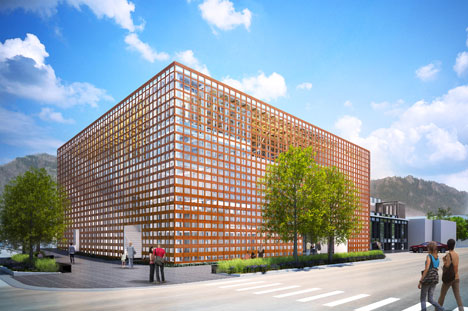
Responding to questions about the proliferation of Japanese architects on the list of Pritzker winners, Ban said he should not be considered a Japanese architect, having studied at the Southern Californian Institute of Architecture and New York's Cooper Union school of architecture.
"I went to the United States to study architecture," said Ban. "Now I am mostly working in Europe, the United States, also Japan, everywhere."
"So I am Japanese but I don't think I should be considered as Japanese architect."
Read our round up of Shigeru Ban's key projects »